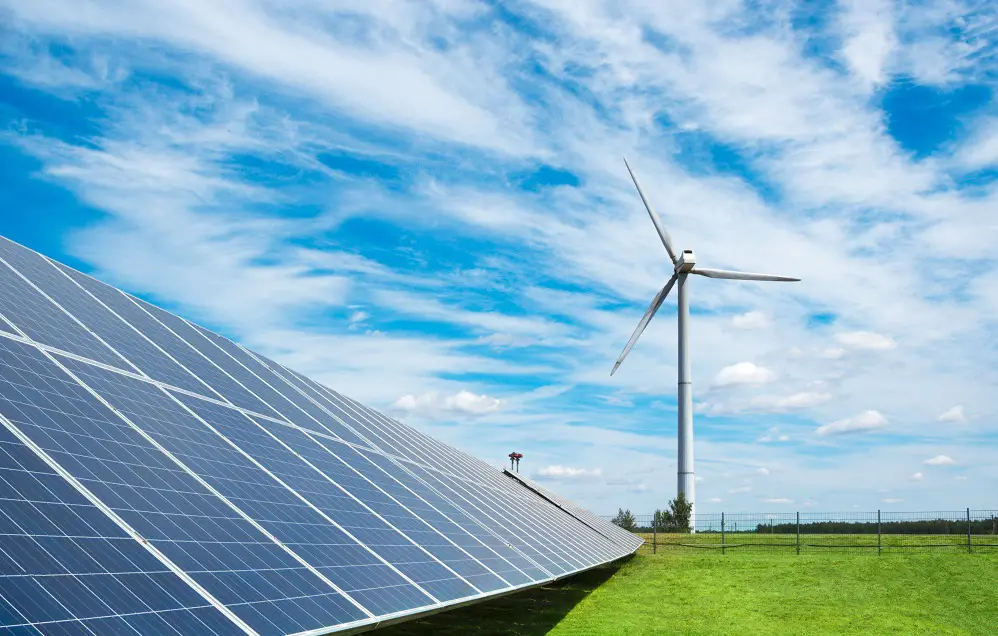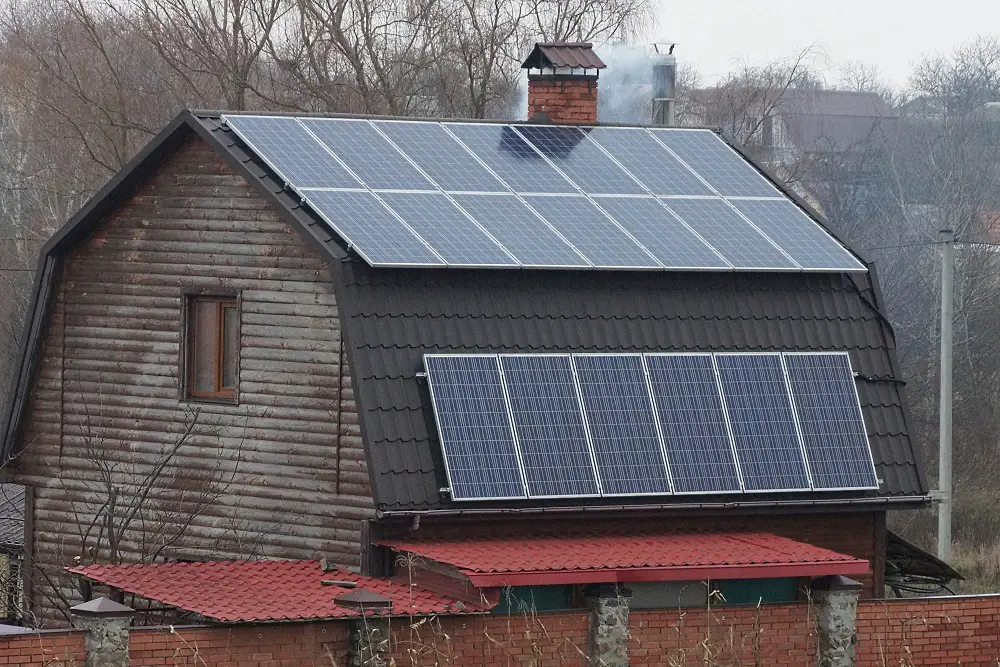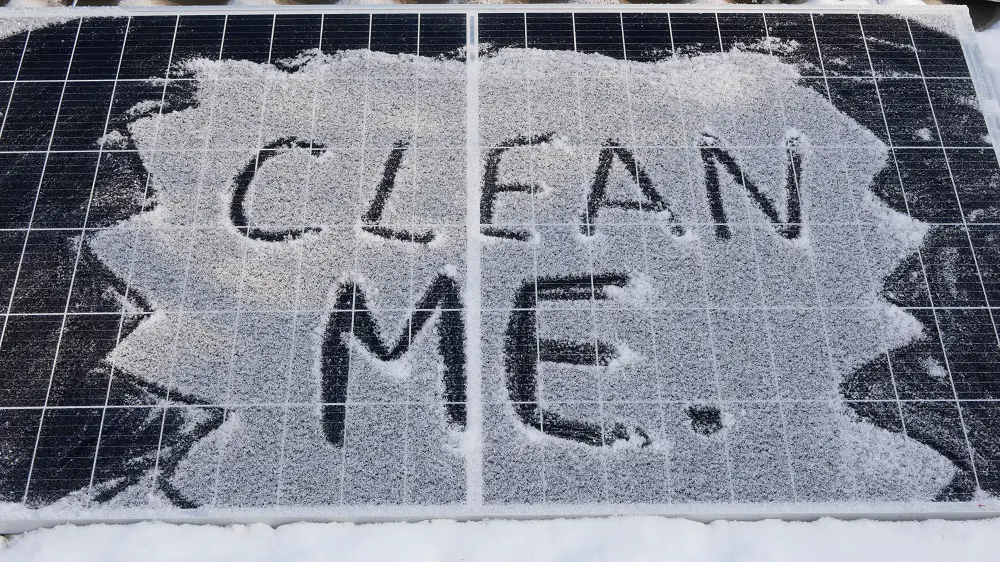Typically there are 2-configurations of cells used in solar panels for residential and commercial use; 60-cell and 72 cells.
Some manufacturers, notably SunPower, offer a 96-cell panel, used in larger installations for businesses where demand is higher.
The overall dimensions of the SunPower model are similar to those of the 60-cell panel. This is due to the manufacturer using smaller individual cells.
These are the common dimensions for each:
| Number of Cells | Length in Inches | Width in Inches | Cell Configuration |
|---|---|---|---|
| 60 | 64 | 39 | 10 x 6 |
| 72 | 72 | 39 | 12 x 6 |
| 96 | 62.6 | 41.5 | 12 x 6 |
Sizes differ by brand, but never by more than an inch or two.
The depth of solar panels is usually between 1.4 and 1.8-inches.
Why Cell Counts Matter
Individual solar cells are wired together to increase their output. A 60-cell solar panel is 60 times more powerful than a single cell. Therefore, the greater the number of cells, the higher the panel’s voltage.
Likewise, a 72-cell unit generates more power than a 60-cell one.
Individual solar cells are typically 5” x 5”, or 6” x 6”.
Most brands employ the larger size however, SunPower uses 5-square inch cells, enabling them to increase power yet reduce overall dimensions.
Why Solar Panels are Rectangular
A rectangle is the most efficient and practical shape; it is perfect for configuring the required number of solar cells.
Their design makes them easy to manufacture and handle and ensures installation is simple.
Why Do Solar Power Dimensions Matter?
Available roof space is the biggest determining factor when working out the amount and configuration of solar panels in an array ( a collection of solar panels that, when linked together, form a solar system).
Residential and commercial properties favor 60 and 70-cell solar panels, with 250 – 350-watts output. Watts represents the unit’s theoretical power production.
Volts x Amps = Watts
Individual solar cells produce around 0.5v. A string of 60 consecutive cells, therefore, has 30-volts.
72 PV cells strung together produce around 36-volts.
What Size Solar Panels Charge a Battery Bank?
Off-grid solar energy – where your system doesn’t connect to the grid – requires a battery bank.
It stores any excess power for use on dull days when power production is limited.
36 solar cells wired in a series produce 18v of power, called a 12v nominal panel, designed to charge a 12v battery.
72 solar cells produce energy to fully charge a 24v battery.
A 48v battery bank requires 2 x 72-cell solar panels to generate enough energy to charge it.
If you opt for the off-grid route, ensure the equipment/roof is substantial and can support the weight of the panels.
Small Solar Panels for Camping, Boats, and Motorhomes
Flexible solar panels suit multiple applications. Their lightweight design enables them to be attached to vehicle roofs and charge as you travel.
If you’re struggling with power for outdoor spaces such as sheds and garages, a small solar panel is an answer. One panel provides enough energy to keep a deep-cycle battery charged.
They typically come in 50, 100, and 160-watt styles, but this varies between brands.
| Wattage | Length in inches | Width in inches | Depth in inches |
| 50 | 26 | 21 | 1 |
| 100 | 47 | 21 | 1.5 |
| 160 | 58 | 26 | 1.5 |
| 50 | 26 | 21 | 0.1 |
| 100 | 48 | 21 | 0.1 |
| 160 | 55 | 25 | 0.1 |
What Size Solar Panels Should You Use
There are many factors to consider:
- Are you building an off-grid or grid-tied system?
- If off-grid, what size battery bank are you hoping to charge? You will need at least one 72-cell or 2 x 60-cells to meet the demand.
- Are there any physical size restrictions for the amount of power you need to generate vs the required number of solar panels and their optimization?
- Will the structure/roof support the solar panel’s dimensions; if in doubt, consider reinforcing before installation.
- Does your solar array need to meet the entire or partial energy demands of your household?
Factors That Influence the Number of Solar Panels
Solar panel dimensions vary depending on their expected output. To calculate your ideal system; size, configuration, number of panels, etc., factor in these points:
Solar Irradiance
It shouldn’t be confused with the number of daylight hours; it is the intensity of the heat and the amount of energy it is capable of generating.
For instance, the sun in the Sahara Desert (the optimum place on earth to position solar panels) produces more power than those placed in Canada for the same duration.
Sunlight Hours
The time of year and whereabouts you live affect the hours of sunlight directed at a solar array. In states such as California, the energy demand of households is greater than that in New England.
The average requirement is 10,400kWh per year.
In California, 7kW systems are sufficient; whereas an 8.8kW system is needed in New England to generate enough power annually.
Output is increased by using bigger solar panels or increasing their amount.
Climate
In hot climates where air-conditioning is constantly running, high demands are asked of a solar array. Additional, larger, or more efficient panels are recommended.
In colder climates that rely on electrical heating, the same applies.
Solar Panel Efficiency
Not all panels are equal; some convert sunlight into electricity more efficiently than others.
For example:
- An 8kW system with low-efficiency panels requires approximately 490ft² roof space.
- Medium-efficiency panels cover around 406ft².
- High-efficiency PV panels need only 358ft² of space.




